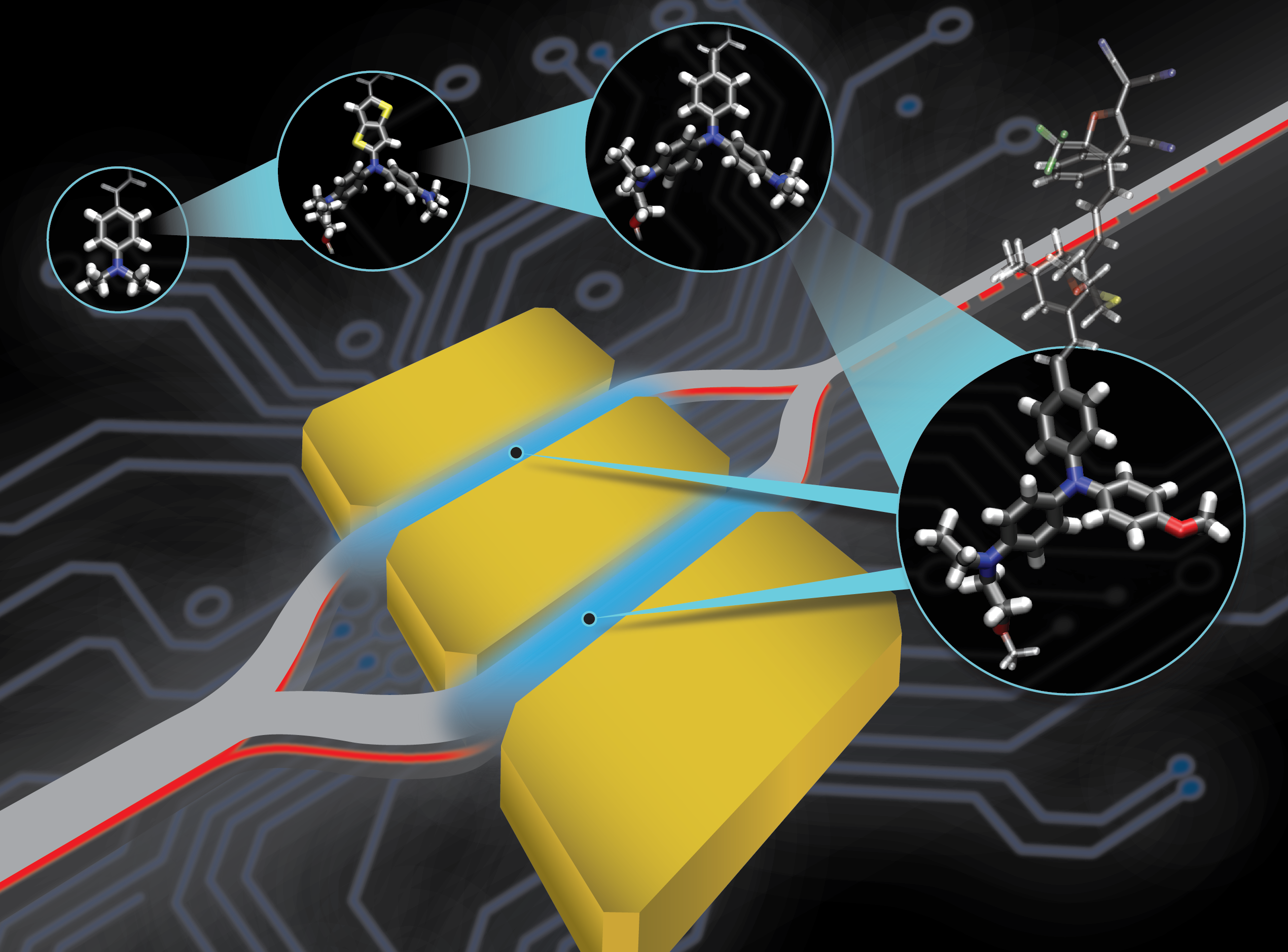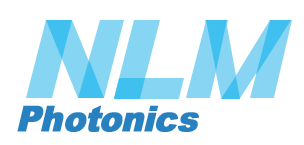Electro-Optic Activity Record Broken: 1,000 pm/V Achieved

New theory-guided organic material crushes previous records, including in-device performance.
October 27, 2021
Seattle, Washington, USA — Organic electro-optic (OEO) materials hit a record high electro-optic activity of 1,000 pm/V, paving the way for increased performance in silicon-organic hybrid and plasmonic-organic hybrid photonic devices. These devices feature ultrahigh bandwidths, smaller device footprints, better energy efficiency, and extremely low voltage compared to silicon alone.
Electro-optic (EO) devices are a crucial and rapidly growing information technology component used in fiber-optic networks, telecommunications systems, and the ever-growing range of sensors used in Internet of Things (IoT) devices. EO devices form a “bridge” between conventional electronics and photonics — in which data is detected, transmitted, or processed using light. Consumers demand higher bandwidth wireless data communication for 6G devices; faster computing and networking for more complex tasks, like AI and quantum; and low energy environmentally friendly advancements necessary for power-hungry data centers. Due to this enormous demand combined with supply chain shortages and national security concerns, the semiconductor industry is undergoing tremendous upheaval. Amidst this upheaval, photonics is seeing increased integration and a booming market.
Optical communications, sensor technology, and broadband signal processing at GHz-THz bandwidths rely on high-performance EO modulators, implemented in either silicon or specialized materials. Organic materials, similar to plastics, can show extraordinary performance for EO modulation. The current leading materials show an activity of about 300 pm/V. However, many applications feature more demanding performance requirements, which makes setting this 1,000+ pm/V record a critical step in ensuring marketplace adoption of OEO and demonstrating future performance improvements.
Using theory-guided design and computational modeling, scientists at the University of Washington and NLM Photonics created new OEO materials to repeatedly set the 1000+ pm/V record, working with collaborators at KU Leuven, Polariton Technologies LTD, and ETH Zurich to characterize the materials at the molecular level and in electro-optic devices. To achieve this 1,000 pm/V record, the scientific team applied learnings from previous materials — such as the stalwart JRD1 and molecular-level record-holder BTP7— and new advancements in theory-guided design to develop two next-generation OEO materials, BAY1 and BAH13. These materials demonstrated electro-optic coefficients (r33) above 1000 pm/V in thin-film devices. The performance of BAY1 and BAH13 is even greater than barium titanate, the inorganic material with the highest EO activity at the same wavelengths (colors) of light. Two peer-reviewed and impactful scientific publications, Advanced Materials (BAY1) and Materials Horizons (BAH13), published these studies.
What does this record-breaking performance mean? That silicon or plasmonic devices integrating the material can run at higher bandwidths with less power because BAH13 delivers more EO activity than any material before. NLM expects to commercialize a variant of BAH13 that is a crosslinkable, heat-resistant material, like HLD, for on-chip use.
The leap to 1,000 pm/V means hybridization with organic materials offers a clear advantage to manufactures and foundries staying on the cutting edge. By developing photonic technologies involving EO components, devices can be made smaller and faster as electro-optic activity increases. Along with this performance increase, the recently proven commercialization of NLM’s materials in an EO modulator from Polariton Technologies LTD truly demonstrates that after 20+ years, the hybrid organic future is here.
Xu, H., Elder, D. L., Johnson, L. E., de, Y., Hammond, S. R., Vander, W., Clays, K., Dalton, L. R., Robinson, B. H., “Electro-Optic Activity in Excess of 1000 pm V−1 Achieved via Theory-Guided Organic Chromophore Design.” Advanced Materials. 2021, 2104174. Doi: /10.1002/adma.202104174
Xu, H.; Elder, D.L.; Johnson, L.E.; Heni, H.; de Coene, Y; De Leo, E.; Destraz, M.; Meier, N.; Ghinst, W.V.; Hammond, S.R.; Clays, K.; Leuthold, J; Dalton, L.R.; and Robinson, B.H. “Design and synthesis of chromophores with enhanced electro-optic activities in both bulk and plasmonic–organic hybrid devices.” Materials Horizons. 2021. Doi: /10.1039/D1MH01206A
About us:
NLM Photonics develops cutting-edge electro-optic and photonics solutions for transforming networking, computing, and sensing alongside our global partners, based in Seattle and Paris. Follow us on LinkedIn @nlm-photonics and on Twitter @NLMPhotonics and visit us at nonlinearmaterials.com.
Media Contact:
Erica McGillivray
Communication Director
[email protected]

